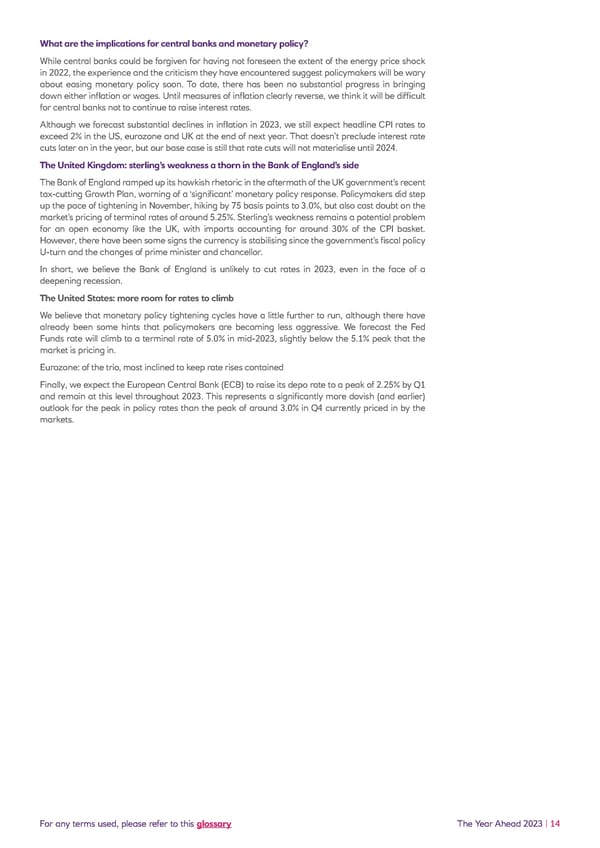What are the implications for central banks and monetary policy? While central banks could be forgiven for having not foreseen the extent of the energy price shock in 2022, the experience and the criticism they have encountered suggest policymakers will be wary about easing monetary policy soon. To date, there has been no substantial progress in bringing down either inflation or wages. Until measures of inflation clearly reverse, we think it will be difficult for central banks not to continue to raise interest rates. Although we forecast substantial declines in inflation in 2023, we still expect headline CPI rates to exceed 2% in the US, eurozone and UK at the end of next year. That doesn’t preclude interest rate cuts later on in the year, but our base case is still that rate cuts will not materialise until 2024. The United Kingdom: sterling’s weakness a thorn in the Bank of England’s side The Bank of England ramped up its hawkish rhetoric in the aftermath of the UK government’s recent tax-cutting Growth Plan, warning of a ‘significant’ monetary policy response. Policymakers did step up the pace of tightening in November, hiking by 75 basis points to 3.0%, but also cast doubt on the market’s pricing of terminal rates of around 5.25%. Sterling’s weakness remains a potential problem for an open economy like the UK, with imports accounting for around 30% of the CPI basket. However, there have been some signs the currency is stabilising since the government’s fiscal policy U-turn and the changes of prime minister and chancellor. In short, we believe the Bank of England is unlikely to cut rates in 2023, even in the face of a deepening recession. The United States: more room for rates to climb We believe that monetary policy tightening cycles have a little further to run, although there have already been some hints that policymakers are becoming less aggressive. We forecast the Fed Funds rate will climb to a terminal rate of 5.0% in mid-2023, slightly below the 5.1% peak that the market is pricing in. Eurozone: of the trio, most inclined to keep rate rises contained Finally, we expect the European Central Bank (ECB) to raise its depo rate to a peak of 2.25% by Q1 and remain at this level throughout 2023. This represents a significantly more dovish (and earlier) outlook for the peak in policy rates than the peak of around 3.0% in Q4 currently priced in by the markets. For any terms used, please refer to this glossary The Year Ahead 2023 | 14
 NatWest Year Ahead 2023 Page 13 Page 15
NatWest Year Ahead 2023 Page 13 Page 15